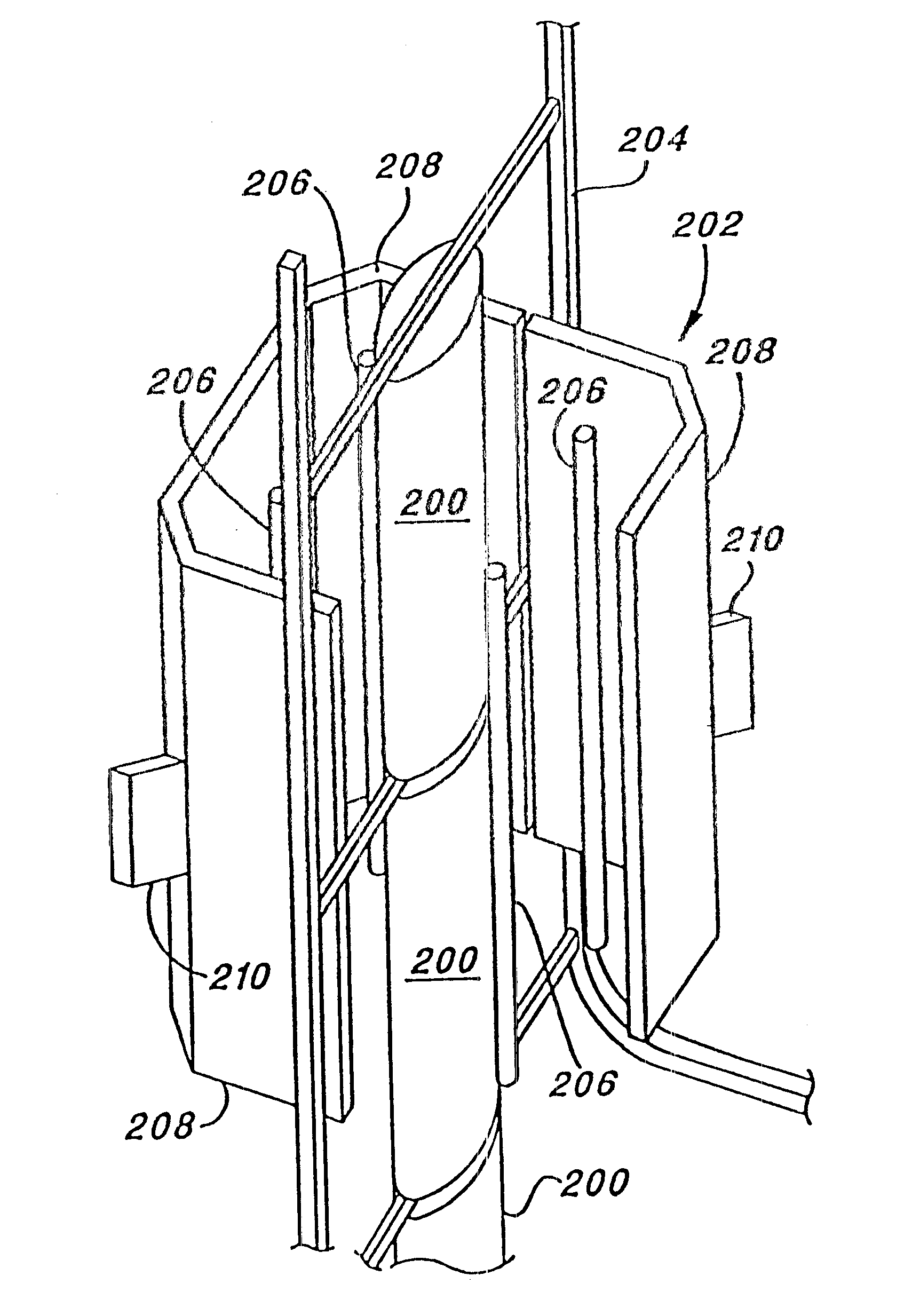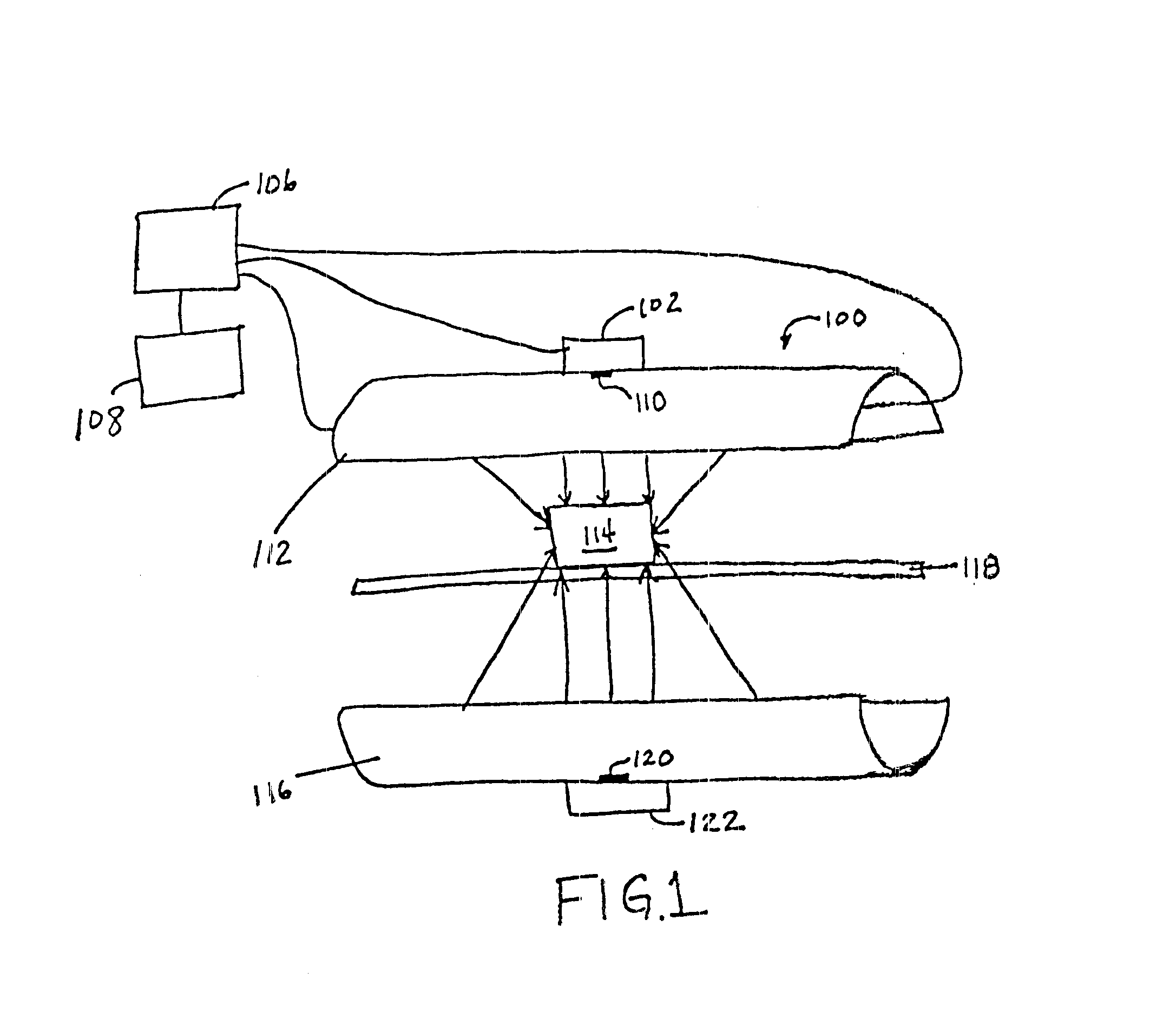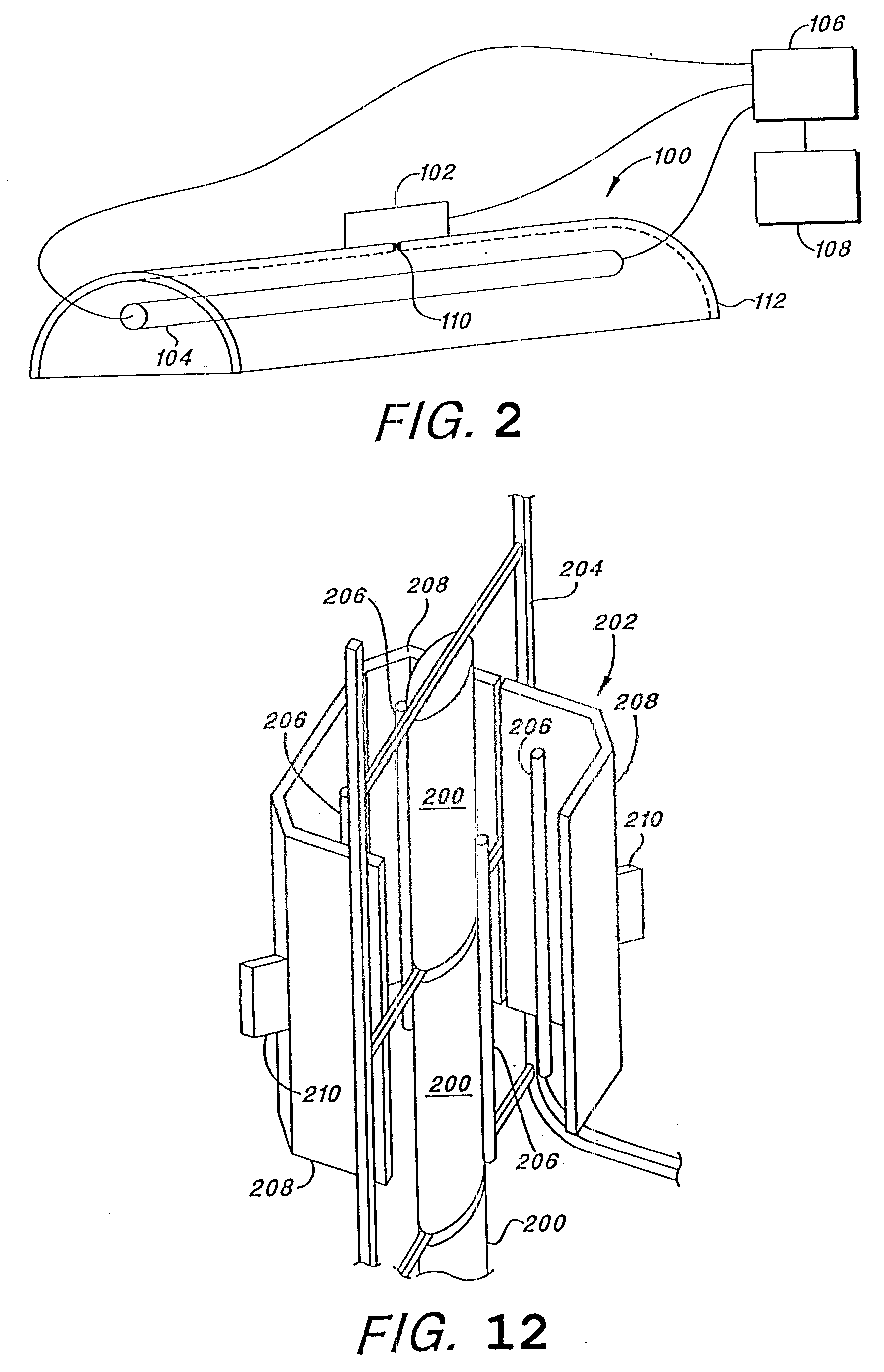Parametric control in pulsed light sterilization
- Summary
- Abstract
- Description
- Claims
- Application Information
AI Technical Summary
Problems solved by technology
Method used
Image
Examples
example 2
Blow / fill / sealed polyethylene containers are filled to various volumes (0.5, 5, 15, and 120 ml) with water-for-injection. Bacillus pumilius spores (ATCC 27142), Bacillus subtillus strain niger var. globigii spores (ATCC 9372), Bacillus stearothermophilus (AMSCO commercial preparation) and Aspergillus niger (ATCC 16404; containing conididiospores, hyphae and heads) are tested.
Six logs of each organism are inoculated by injection with a small gauge needle. Twelve replicate samples for each combination of organism, container volume, and treatment mode are inoculated. Two of the 12 samples serve as inoculation controls, and the small inoculation puncture is sealed directly with medical grade silicon sealant. Ten of the samples are treated with high-intensity, short-duration pulses of polychromatic light in a broad spectrum, before application of the medical grade silicon sealant in order to prevent shadowing of any sample volume by the sealant.
Two modes of treatment are tested. Containe...
example 3
The importance of fluence-per-flash is further demonstrated in the results seen in Table 2 where the antimicrobial effects of pulsed light treatments are shown on Aspergillus niger (condiospores, hyphal debris, and sporangia recovered by a crude wash of a mature culture) inoculated by spraying onto the surface of white plastic packaging material. The log survival results are documented for a range of treatments (0.34, 0.53, 0.75, 1, and 1.3 J / cm.sup.2 per flash) used as a single flash, or after various total numbers of flashes (and therefore various total treatment fluences). When 0.34 J / cm.sup.2 / flash treatment is performed, the resulting deactivation obtained is relatively constant at about 2 logs survival after about 7 flashes and through treatments ranging up to 40 flashes (40 flashes equals a total accumulated treatment fluence in excess of 13 J / cm.sup.2). However, a treatment comprised of a single flash at 1.3 J / cm.sup.2 / flash is seen to result in no recovered viable organis...
PUM
| Property | Measurement | Unit |
|---|---|---|
| Length | aaaaa | aaaaa |
| Length | aaaaa | aaaaa |
| Length | aaaaa | aaaaa |
Abstract
Description
Claims
Application Information
 Login to View More
Login to View More - R&D
- Intellectual Property
- Life Sciences
- Materials
- Tech Scout
- Unparalleled Data Quality
- Higher Quality Content
- 60% Fewer Hallucinations
Browse by: Latest US Patents, China's latest patents, Technical Efficacy Thesaurus, Application Domain, Technology Topic, Popular Technical Reports.
© 2025 PatSnap. All rights reserved.Legal|Privacy policy|Modern Slavery Act Transparency Statement|Sitemap|About US| Contact US: help@patsnap.com



